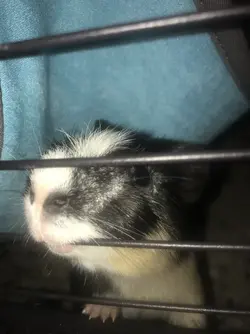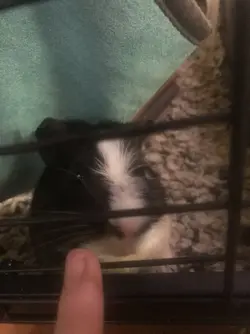michlovespigs
New Born Pup
- Joined
- Dec 29, 2018
- Messages
- 2
- Reaction score
- 0
- Points
- 25
Just got my sweet babies about a week ago, things have been going pretty normally except this bald spot thats seems to be spreading. I thought the other one could’ve been “barbering” bc he was very nervous after he first got here, but it doesn’t seem that way. Bennie (in attatched picture) is always full of energy, hungry, and excited to see us. I’ve noticed scratching here or there but no more than our other baby. Taking him to the vet soon, but would like to know what i’m in for, or if i even need to. PLEASE HELP

